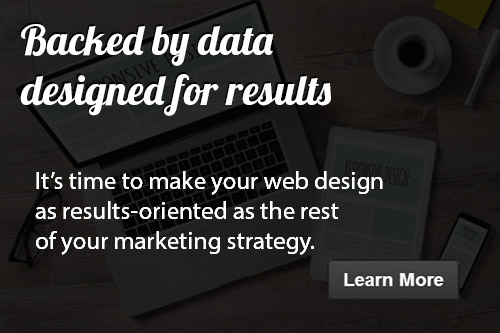In 2014, the percentage of consumers accessing the web via mobile devices, such as tablets and smartphones, surpassed that of desktop and laptop users. In fact, more than 25 percent of consumers use only mobile devices to access the web. These statistics mean that the traditional web design model of static pages is flawed at best, if not outright broken, when it comes to being user-friendly and maximizing.

Simply put, in order for consumers to respond positively to your company, your company’s web design model must respond on multiple devices. Responsive web design replaces the need for both a traditional and a mobile website by using a grid-based design that automatically adjusts and responds to the device being used.
While responsive websites are the right solution for reaching maximum market segments, the thought of redesigning your website every few years to keep up with changing markets, content trends and technological advances probably doesn’t sit well with your bottom line.
The solution to replace static and finite website overhauls is Growth Driven Design – the new web-design standard that combines responsiveness, continual improvement and conversion optimization. So, if the notion of diving into the choppy waters of yet another web design project raises questions or doubts with you or your team, listen to your instincts and rethink your approach.
Conversion-Focused Best Practices
Is your website delivering the ROI you expect? Does your website use engaging content pertinent to its visitors? Are your visitors responding? In the simplest terms, a conversion-focused website is one that compels your visitors to respond to a call to action. Here’s how:
-
From the instant a visitor lands on your website, they should know that it’s important to their needs. Use clear language and images that reinforce your message – not distract from it.
-
Use content that connects. Videos and blog posts are fantastic for starting a conversation with your visitors. E-books and demos are desirable content that extract market data.
-
Quickly capture the interests of your visitors. Use graphic CTAs and CTA text links in pages. Make good use of social media planning and networks.
-
Create targeted email campaigns from your lead-nurturing database. Feed your targeted leads often with new content offers.
-
Set goals, and then track, analyze and tweak. Determine your percentage of conversions from website visitors to leads, as well as leads to customers.
Marketing Automation Best Practices
The goals of marketing automation software are to more efficiently drive visitors to your website and nurture leads with personalized content to help maximize conversions. Consider the following example:
-
Using marketing automation software, you put together an email campaign inviting targeted contacts to download an E-book.
-
The following day, a thank you note is automatically generated and emailed to those contacts that downloaded the offer.
-
Three to five days later, you send a follow-up email to the contacts that downloaded the E-book and offer them a video, demo, case study or other relevant offer.
-
Your sales team responds to contacts that accepted the offer.
You’ve sent personalized and useful information to contacts without annoying them or burning your leads.
Growth Driven Design
The process of designing a responsive website that incorporates conversion-focused and marketing automation best practices is Growth Driven Design. By meeting these standards via continual, iterative development, you’ll have a website in place that compels and moves your website visitors and conversion prospects through the buying cycle as intuitively as a click, tap or swipe.
Find out how your next web design project could be the last one you’ll need for continual inbound marketing success by reading our Guide to Web Design Best Practices.
Recent Posts
Where SEO Meets Design: Best Practices For Optimizing Conversions
October 20, 2017 . .
Do You Have Lackluster Branding?
October 20, 2017 . .
Long Tail Keywords Vs. Branded Keywords
June 7, 2017 . .
4 Things to Do Tonight for a More Productive Day Tomorrow
May 15, 2017 . .
4 Signs You Need to Bring in a Marketing Agency
May 15, 2017 . .
Business Etiquette That Will Set You Apart from the Rest
May 11, 2017 . .

